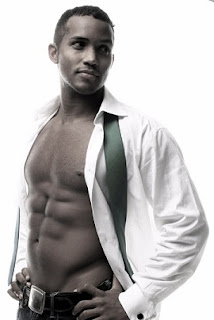On June 21st, 1985, I drove cross-country 1860 miles from my parents' house in Rock Island, Illinois to West Hollywood, my 10-year old Dodge Dart packed with bedding, dishes, clothes, and mementos. There was only room for one box of books, so I took an Italian-English dictionary, a world atlas, Death in Venice, Les fleurs du mal, Earthfasts, Alice in Wonderland, The Gayellow Pages, Pidgin to da Max, a complete Edgar Allen Poe, a guide to old movies, three Alix and Enak comics, three books from the Green Library, The Lord of the Rings trilogy -- and On the Road, by Jack Kerouac.
My heterosexist Modern American Literature professor mentioned the Beat Generation, briefly, as a literary movement that rebelled against 1950s conformity with drugs, jazz music, Eastern mysticism, and free love. He didn't mention that the "free love" was often gay. In fact, the main poem he assigned was: "Woman woman woman woman woman woman woman woman woman woman."
But when I looked more closely into the movement during the famous summer of 1981, I discovered lots of gay content:
William S. Burroughs, who wrote weird impenetrable "cut up" novel (where he tore the pages up and reassembled them at random), but the heroes were gay junkie outsiders.
Paul Bowles (right), who moved to Morocco in 1947, drawn by the Muslim nonchalance to same-sex practices. In 1960 he met a young Berber named Mohammed Mrabet (left), and translated his autobiographical novel about rent-boys, Love with a Few Hairs.
By the way, the 1959 movie The Beat Generation, with Steve Cochran, has nothing to do with the Beat Generation.
Allen Ginsberg (played by James Franco, top photo, in 2010), whose long poem Howl (1957) was about his alienation from materialist, heterosexist American society. It was tried for obscenity due to the overt references to gay sex.
Ginsberg's long-time lover Peter Orlovsky (right, with his brother), whose poetry was even more overtly homoerotic.
My friend Fangorn claimed that his first sexual experience was a three-way with Ginsberg and Orlovsky.
Leroi Jones, later Amiri Baraka, who renounced his gay identity to proclaim that gay men were devils.
And the counterculture classic that every hipster at Augustana College read, or claimed to: On the Road (1957), by bisexual Beat Generation guru Jack Kerouac (right), about his mostly unrequited love for Neal Cassidy. In the novel, Sal Paradise is in love with Dean Moriarity (played by Sam Riley and Garrett Hedlund in the 2012 movie), who keeps talking him into leaving The Girl for wild homerotic jaunts across American.
They like sex with both men and women (they disapprove of "fags," who like only men), but are suspicious of women, who lead to marriage, settling down, domesticity, and conformity, a loss of something essential and noble. Men represent freedom, adventure, nonconformity, being true to yourself. In the end Sal chooses domesticity and rejects homoromance as "selfishness."
But on the way they are obviously lovers, and that in itself was freedom enough in the dull furrowed Midwest in 1981.
See also: Fangorn's Hookup with Allen Ginsberg.
My heterosexist Modern American Literature professor mentioned the Beat Generation, briefly, as a literary movement that rebelled against 1950s conformity with drugs, jazz music, Eastern mysticism, and free love. He didn't mention that the "free love" was often gay. In fact, the main poem he assigned was: "Woman woman woman woman woman woman woman woman woman woman."
But when I looked more closely into the movement during the famous summer of 1981, I discovered lots of gay content:
William S. Burroughs, who wrote weird impenetrable "cut up" novel (where he tore the pages up and reassembled them at random), but the heroes were gay junkie outsiders.
Paul Bowles (right), who moved to Morocco in 1947, drawn by the Muslim nonchalance to same-sex practices. In 1960 he met a young Berber named Mohammed Mrabet (left), and translated his autobiographical novel about rent-boys, Love with a Few Hairs.
By the way, the 1959 movie The Beat Generation, with Steve Cochran, has nothing to do with the Beat Generation.
Allen Ginsberg (played by James Franco, top photo, in 2010), whose long poem Howl (1957) was about his alienation from materialist, heterosexist American society. It was tried for obscenity due to the overt references to gay sex.
Ginsberg's long-time lover Peter Orlovsky (right, with his brother), whose poetry was even more overtly homoerotic.
My friend Fangorn claimed that his first sexual experience was a three-way with Ginsberg and Orlovsky.
Leroi Jones, later Amiri Baraka, who renounced his gay identity to proclaim that gay men were devils.
And the counterculture classic that every hipster at Augustana College read, or claimed to: On the Road (1957), by bisexual Beat Generation guru Jack Kerouac (right), about his mostly unrequited love for Neal Cassidy. In the novel, Sal Paradise is in love with Dean Moriarity (played by Sam Riley and Garrett Hedlund in the 2012 movie), who keeps talking him into leaving The Girl for wild homerotic jaunts across American.
They like sex with both men and women (they disapprove of "fags," who like only men), but are suspicious of women, who lead to marriage, settling down, domesticity, and conformity, a loss of something essential and noble. Men represent freedom, adventure, nonconformity, being true to yourself. In the end Sal chooses domesticity and rejects homoromance as "selfishness."
But on the way they are obviously lovers, and that in itself was freedom enough in the dull furrowed Midwest in 1981.
See also: Fangorn's Hookup with Allen Ginsberg.





































































